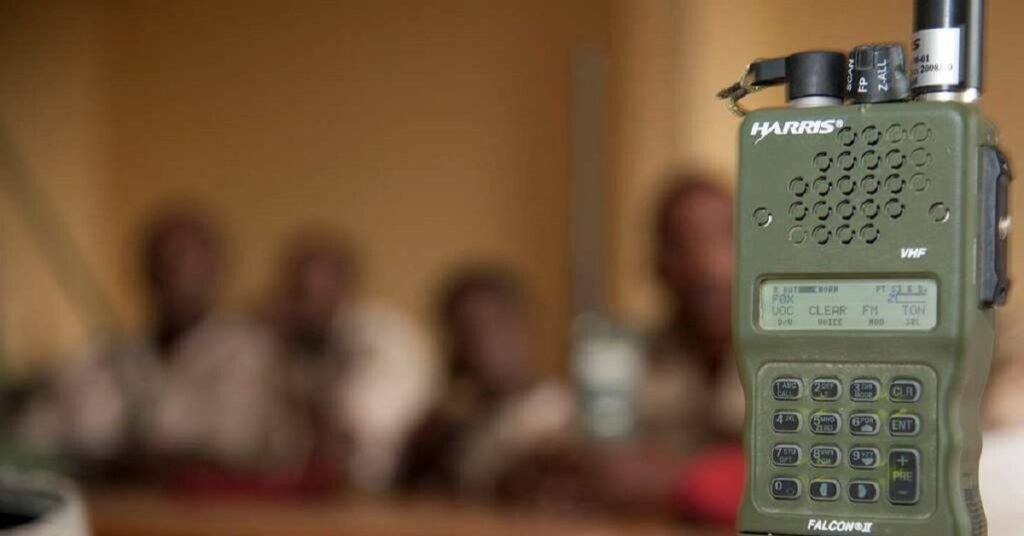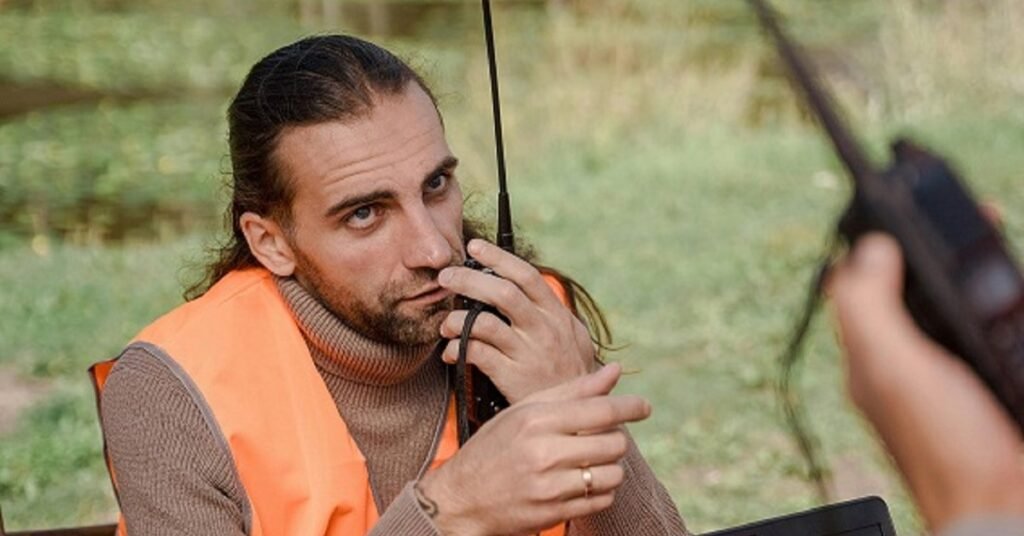Table of Contents
ToggleDo Walkie-Talkies Work Through Walls? Breaking Down the Barriers!
Two way communication devices like walkie-talkies can be a very powerful device for emergency communication as well as quick group communication within the coverage. This can be on family camping trips, security guard posts or even one of the frontlines. However, a lot of the most frequently asked questions regarding these devices is “Can walkie-talkies go through walls?. A fair and important question to consider. This is even more important when you expect them to be transmitting well through a building or other physical obstructions. This ham radio review will show you the science behind how walkie-talkies send signals through walls. We will also delve into how they connect and what you can anticipate when using them in these approaches.
Basic of Two Way Communication
Before knowing if a walkie-talkie signal penetrates the wall or not, we need to understand how actually the radio wave coming from your walkie-talkie’s transceiver works on air. Walkie-talkie or any other radio device transmits and receives signals directly as electromagnetic waves from air. However, radio waves do not permeate all materials readily. Just as light waves struggle to travel through opaque things, radio waves suffer difficulties when confronted with obstacles such as walls. This is especially important when comparing the performance of walkie-talkies under various types of structure. This ham radio review will look at how well they work when walls are present.
If you’re curious about how walkie-talkie or ham radios works, check here.
Walls: The Ultimate Walkie-Talkie Nemesis?
Walls can provide considerable problems to walkie-talkie, but not all walls are the same. Some types of barriers may weaken the signal marginally, while others may completely block it.
Drywall or Wooden Walls: Your radio waves should travel through that with minimal to no interference. Therefore, if you use these walkie-talkies in a nucleus home or structure with drywalls and wooden partitions, it is probable that communication should be more than acceptable.
Brick, Concrete, or Metal Walls: These kinds of materials are much more solid for radio waves to get through Concrete and brick walls absorb very thick, around 90% of the signal. Metal, on the other hand, acts as a reflector and has capacity to guide the signals in any direction. Given these circumstances, even the best walkie talkies will sometimes not deliver a good signal.
This review of a ham radio shows that the walls it is surrounded by and created from truly do make huge differences in its power. In walkie-talkies, what you have to take into account is the type of walls obstructing both communication sides.
The Distance Factor

Aside from barriers, distance is another critical element that hampers the effectiveness of walkie-talkies. When two walkie-talkies are far away, the signal is weakened. If walls or other obstacles get in the way, this leads to an inferior quality of communication.
For example, attempting to communicate from one end of a huge building to the other may result in severe signal loss. This is particularly true if several walls, floors, or barriers are present. The farther distant you are, the harder it is for the radio waves to sustain their power. This is the reason why distance has an essential role in features to look for on ham radio walkie talkies from a of interest review.
Oh, and how far does a walkie-talkie connect? How far can we communicate with a pair of walkie-talkies? Let’s find out here.
Frequency Matters: UHF vs. VHF
Frequency — An essential factor which directly affects the quality of performance in being able to use walkie talkies through walls. There are generally two types of frequencies that walkie-talkies use such as the UHF or Ultra High Frequency, followed by VHF(Message Broadcast) frequency.
UHF: UHF walkie-talkies are usually considered much better for indoor usage. Their shorter wavelength also means that they can penetrate walls and other obstacles better. It means that UHF walkie-talkies can be used with walls around, which makes it the great choice for talking among buildings or in metropolitan areas.
VHF: VHF radios have longer wavelengths and are capable of traveling greater distance over open ground. However, they are not as good at going through barriers (walls). They are perfect for outdoor use, over long distances, however not so trustworthy indoors or buildings with multiple obstructions.
As is evident from the ham radio review, this would be better for UHF radios if you plan on being in more obstructed conditions, but VHF fits best with clear line-of-sight uses.
Click here to get more detailed information about various types of frequency bands Oh, and be sure to check here at what frequency band (VHF or UHF) is right for your voice needs by means of quality in communication down the place you are living.
Multiple Floors: Adding Vertical Complexity
When discussing walkie-talkie that functions through walls, it’s important to widen the discourse to include floors. Communicating across levels in multi-story structures adds a new level of complication. Floors are frequently composed of heavier, denser materials such as concrete, which can cause severe interference to radio frequencies.
However, in buildings with hardwood floors or open stairwells, walkie-talkies may still be able to converse successfully across levels. The same principles apply here as they do for walls: thicker, denser materials will block the signal more, whereas open or less dense materials will allow for greater transmission.
Consider utilizing walkie-talkie in a house with wood flooring vs a high-rise structure with reinforced concrete floors. In the former instance, you’re more likely to keep a clean signal between floors. This ham radio review indicates that if floor penetration is critical, you might consider investing in a higher powerful walkie-talkie or using signal-boosting accessories like repeaters.
Tips for Better Communication Through Walls

Even though walls can impede the operation of walkie-talkie, there are various ways you can use them to increase communication.
Get Close to Windows: Radio waves are fond of free spaces, with windows the signals can easily travel. As for windows, in theory radio waves can better penetrate them (depending on the material) and thus be radiated externally where there are fewer obstacles.
Avoiding Interference: The strength of your signal might get weakened by some interferences such as microwaves, Wi-Fi routers or even fluorescent lights. Make sure that your walkie-talkie is not too close to such devices for a better signal.
Use a Signal Repeater: In more professional or elaborate settings, a signal repeater may enhance the signal, allowing walkie-talkies to converse more efficiently across long distances and over walls. Repeaters effectively pick up and retransmit the signal from one walkie-talkie, increasing its range. Learn more about radio repeaters by clicking here.
Upgrade Your Antenna: A more powerful or higher-gain antenna can assist boost signal strength, allowing radio waves to flow through walls and other obstructions. Many ham radio reviews suggest that people experiencing poor signals should upgrade their antennas. Learn more here about how a better antenna can improve and maintain clearer communication.
The Impact of Power Output
When determining how well walkie-talkie functions through walls, power output is another crucial consideration. The higher the output power, the stronger the signal and the more capable the walkie-talkie is of dealing with barriers such as walls. Most consumer walkie-talkies run on 0.5 to 5 watts of electricity, however professional ones used by emergency services or in industrial environments may have larger power outputs.
Higher power output allows radio waves to go farther and penetrate more obstacles. However, this implies that the gadget will use more battery power. In this ham radio review, we look at the trade-off between power output and battery life while selecting a walkie-talkie for usage in a walled environment.
Can Walkie-Talkies Work Through Metal?
Metal, for example, is one of the worst materials for radio waves to penetrate. Metal walls or enclosures, such as those you might find in specific industrial buildings or vehicles can cause walkie-talkies to have a hard time broadcasting decent signals. Metal also serves as a barrier, reflecting or mesmerizing packets of radio waves and making it more difficult for them to go through.
In these instances, it is frequently preferable to position oneself outside of metal enclosures or utilize strategically positioned repeaters to sustain contact. Walkie-talkies with higher power outputs or professional-grade antennas may perform better in these situations. However, metal will always present a significant barrier.
Final Thoughts
So, do walkie-talkie transmits through walls? The quick answer is yes, but with certain limits. Several factors affect walkie-talkie performance. These include the type and thickness of the walls, the distance between devices, and the operating frequency. You can improve your walkie-talkie’s performance in areas with many walls by using the right tactics. These include selecting UHF frequencies, reducing interference, or using repeaters.
This ham radio review has explored various factors that affect walkie-talkie performance through walls. We’ve also provided practical tips to help improve your communication. While walkie-talkies aren’t magical devices that can overcome any obstacle, understanding how they work can help you achieve the greatest potential performance, especially in difficult situations.
Check out other ham radio reviews and resources for more extensive instructions and equipment reviews, and while selecting a walkie-talkie, keep your individual demands in mind.


